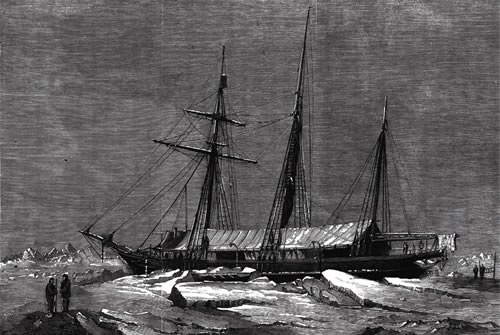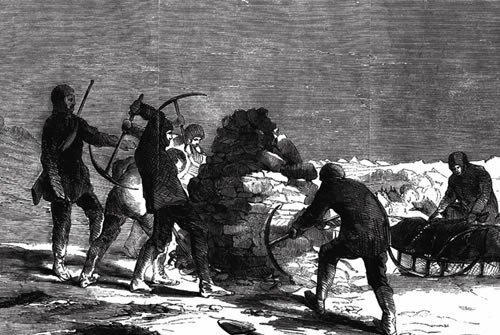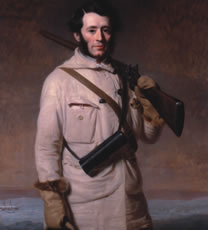MEDIA COVERAGE
Radio 1's Morning Ireland
Dundalk devotes exhibition to Arctic Fox
RTE's Nationwide
Exhibition on Dundalk polar explorer
The Life of Sir Francis McClintock
Francis Leopold McClintock was not only one of the Arctic’s greatest explorers but was recognized as being one of the most important adventurers in the Victorian period. The scale of his achievement is best illustrated in this letter, dated June 30 1907, from the President of the Royal Geographical Society:

In the name and on behalf of the Council of the Royal Geographical Society, we salute and congratulate our Gold Medalist of 1860, and one of the most valued of our colleagues, on a great occasion. For this day is the fiftieth anniversary of the departure of the Fox on her memorable voyage. "We are reminded of your long preparation for your final Arctic service, during which you became the organizer and the creator of Arctic sledge-travelling. You brought your system to such perfection that you and your companion, Lieut. Frederick Mecham, achieved the wonderful journeys of 1853 and 1854 the most wonderful on record. These results afford the strongest proof of the suitability of your travelling equipments. "With such experience you were the leading Arctic authority when Lady Franklin, forced to complete the search for her husband and his gallant companions at her own expense, secured your services to command the expedition. The voyage of the Fox was a great landmark in the history of Geography, whether we consider its conduct, its discoveries, or its momentous results. There is nothing finer in our naval annals than your firmness and resolution when, after the misfortune of being beset for a winter, and then driven out of the ice in a gale of wind, you coolly turned the ship's head again ' Northward Ho ! You sought no port for refreshment, but turned at once to the battle. Such indomitable pluck commanded success.
The letter continues with the wish …
That you may long be spared to us, and that you and yours may continue to enjoy health and happiness, is the earnest wish and hope of your numerous friends and admirers, and, above all, of your old colleagues, who take this propitious opportunity of giving expression to their feelings.
Ironically, McClintock was to die just 5 months later with a legacy secured in history as the man who discovered the fate of Franklin. This is his story …
Francis Leopold McClintock was born on July 8, 1819 to parents Henry and Elizabeth. Henry was a collector of customs for the port of Dundalk and resided at a house which still stands at Seatown Place. The family’s ancestral roots lay with the arrival to Ireland from Scotland of Alexander McClintock in 1597.

Francis exhibited an interest in the outdoors from an early age, often going hunting and fishing on the Fane and the Dee with his father. This interest is most notable in his earliest memories when he recalled that as a boy of 8 or 9 I was out walking near the sea shore and in reaching out to catch a little crab, I fell into the water. I suppose that my father did not see me and that I must have nearly drowned for I remember struggling in the water and then a sensation of pleasant dreams.
This incident did not distract him from realising his longstanding ambition:
As I [sic] child I always wished to be a sailor and my desire to go to sea was the result of these circumstances:
1. my cousin William Bunbury was a sailor
2. because of a portrait of Admiral Cranfield Berkley in uniform which was hung in my Father’s drawing room
3. because I had been told that a knowledge of Latin was not required in the navy
On June 20th 1831 his cousin William (a Lieutenant in the Royal Navy) wrote to Henry McClintock offering Leopold the position of a first-class volunteer on the Samarang. Just two days later Francis Leopold McClintock boarded his new home carrying with him his most valued possessions – a bag of marbles and a bottle into which he had squeezed some apple juice. Aged 12, standing 4 feet 6 inches tall and weighing just 2 lbs more than the First Lieutenant’s Newfoundland dog he took his first steps in a career that would last over 50 years.


